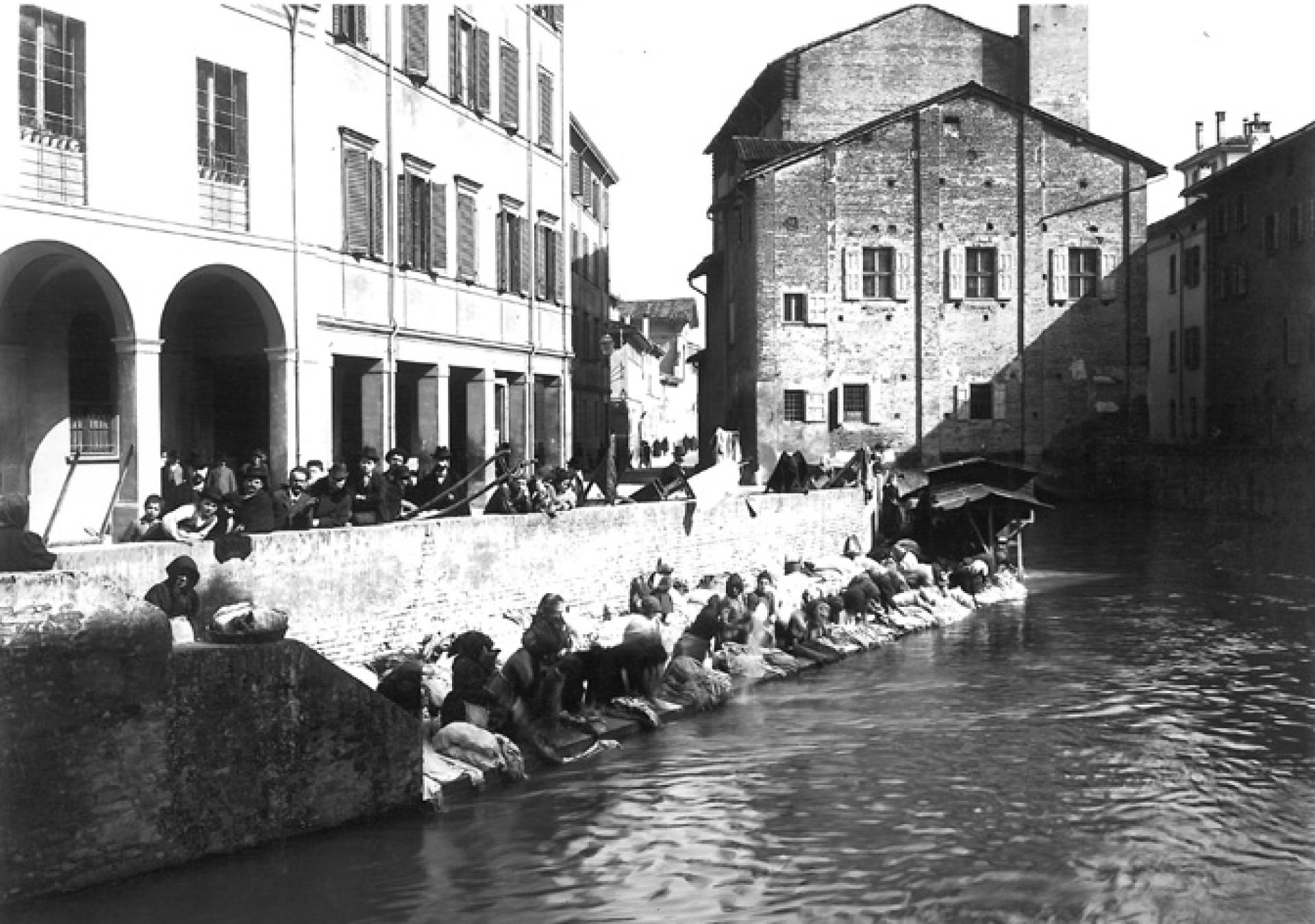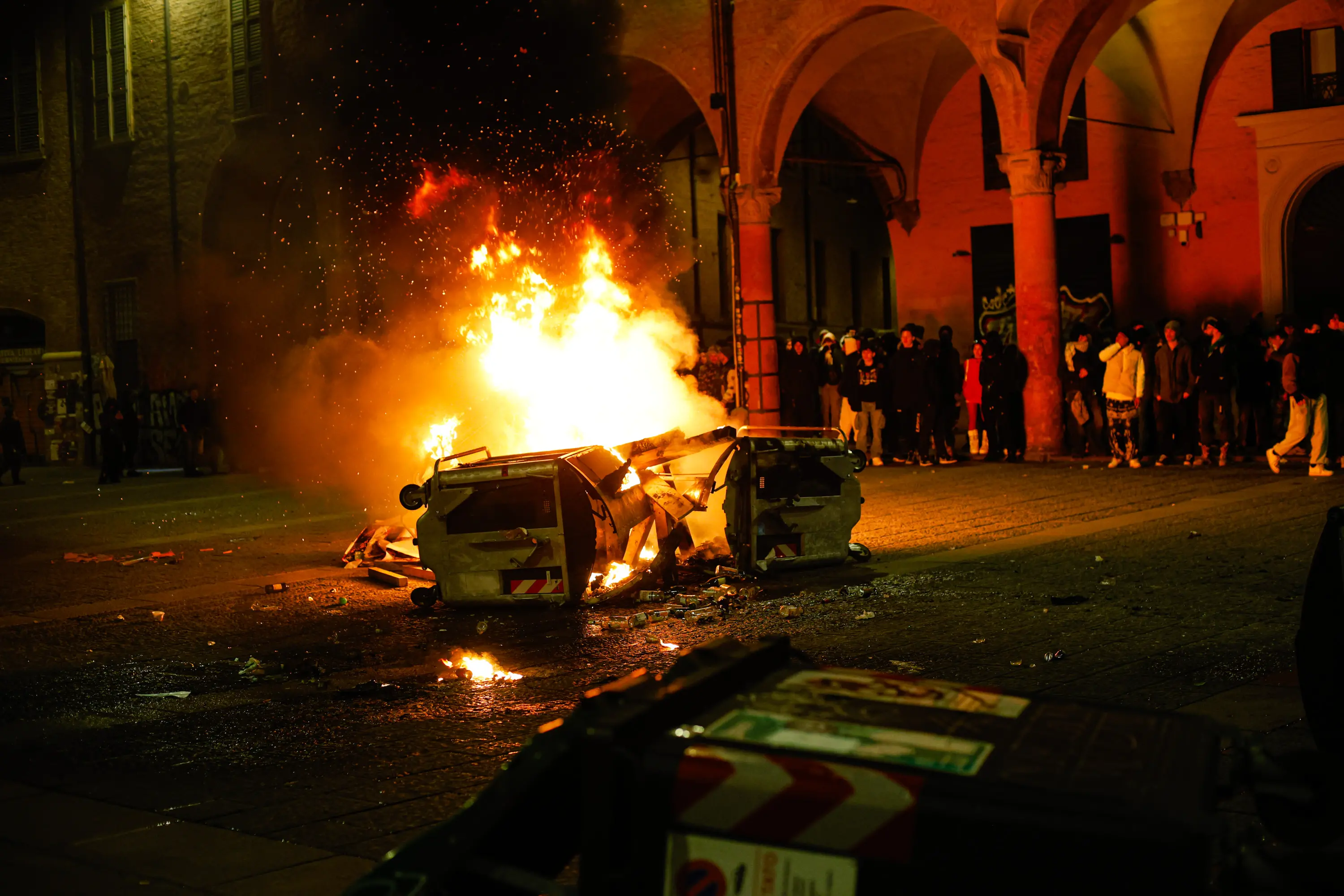How a City Loses Its Art: A Practical Example
I chose the city of Bologna as an example because it well represents the problems found in many cities. It is neither too big nor too small, and it has a rich mix of ancient buildings and infrastructure alongside more recent constructions. Being a European city, and especially an Italian one, it is home to numerous churches, ancient monuments, paintings, ruins of past civilizations, and other precious cultural treasures. What has happened and continues to happen in Bologna likely reflects a situation very similar to that of the cities in which you live.
Urbanization: the Removal of the City Walls

Bologna’s city walls, which once delineated the urban perimeter and acted as a physical and symbolic canvas for centuries of artistic and civic expression, were systematically removed over decades. These walls not only protected the city but were adorned with historical frescoes, reliefs, and inscriptions that told the story of local communities. Their removal, justified under the guise of modernization and traffic improvement, eliminated more than just stone and brick: it erased countless layers of memory, craftsmanship, and cultural dialogue between generations.
The consequences are profound. Without these walls, Bologna lost one of its primary visual narratives, and future generations no longer have the opportunity to walk alongside the tangible evidence of their ancestors’ lives. The disappearance of these structures also disrupted the urban layout, changing how public spaces interact with the historical center, and leaving gaps where art and social identity once thrived.
Undervaluation of Historical and Cultural Assets: the Disappearance of the Canals

Bologna was once nicknamed the “City of Canals” because its waterways provided both functionality and beauty, connecting districts and creating reflections of palaces, bridges, and gardens. Over the 19th and 20th centuries, nearly all these canals were covered or eliminated to allow for urban development, industrialization, and road expansion. Only La Finestrella and other few points remains today, a small vestige of a vibrant network that shaped the city’s artistic identity.
The loss of the canals is more than an environmental or architectural issue: it directly removed an artistic framework that inspired painters, writers, and architects. The flowing water, the reflections of frescoed facades, and the subtle interplay of light and movement were all integral to Bologna’s visual culture. By erasing them, the city severed itself from a living source of creativity and aesthetic memory, leaving only fragments of what was once a rich, interwoven artistic ecosystem.
Bad Policies: Decay of Porticos and Public Spaces

The porticos of Bologna, stretching for kilometers and forming one of the most remarkable architectural features of the city, once served as open-air galleries, communal meeting points, and stages for civic life. Over time, neglect, inadequate maintenance, and urban wear have left many of these porticos in a state of serious decay, with structural cracks, peeling plaster, and widespread graffiti.
Notable spaces like the Montagnola, historically a hub of cultural and social activity, now reflect a mixture of neglect and degradation. Litter accumulates in areas that were once meticulously maintained, public seating is damaged, and historical sculptures and decorative elements are often defaced. The artistic value of these spaces is steadily eroded, diminishing both aesthetic appreciation and civic pride.
Social and Cultural Degradation

Alongside architectural decay, social factors exacerbate the destruction of Bologna’s artistic heritage. The rise of graffiti, indiscriminate trash disposal, public intoxication, and the emergence of so-called “baby gangs” create environments where cultural heritage is neither respected nor protected. These behaviors foster a sense of disorder that discourages civic engagement and appreciation for historical and artistic assets.
This cultural degradation forms a vicious cycle: neglected spaces attract anti-social behaviors, and these behaviors, in turn, accelerate the deterioration of both public and private artistic spaces. Street art that does not respect historical works, vandalism of monuments, and general disorder collectively erode the aesthetic and cultural integrity of the city, leaving citizens and visitors disconnected from its rich artistic history.
Conclusion: A City at Risk
The cumulative effect of removing historical walls, destroying canals, neglecting porticos, and allowing social decay has put Bologna’s artistic legacy at serious risk. Without immediate and coordinated action from authorities, cultural institutions, and citizens, the city risks losing the visual, architectural, and social narratives that have defined its identity for centuries. Preserving art is not merely an aesthetic concern; it is a moral imperative, a commitment to memory, community, and continuity.
By understanding the consequences of past decisions and recognizing the importance of every wall, canal, portico, and sculpture, Bologna can begin to reclaim its artistic soul. Restoration, careful urban planning, community engagement, and education are essential tools to prevent further loss and to ensure that future generations inherit a city rich in cultural meaning and artistic vitality.